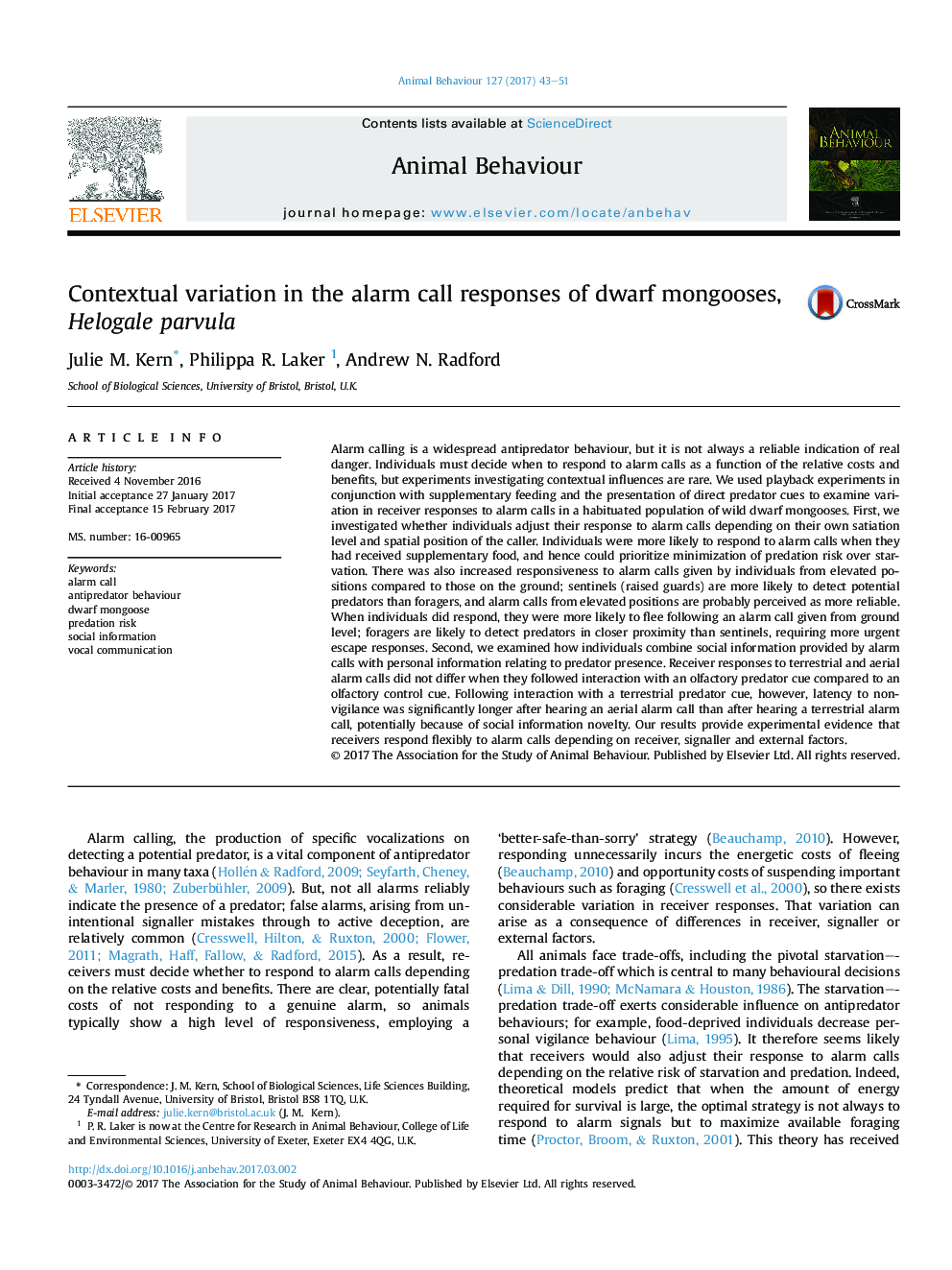| کد مقاله | کد نشریه | سال انتشار | مقاله انگلیسی | نسخه تمام متن |
|---|---|---|---|---|
| 5538336 | 1552201 | 2017 | 9 صفحه PDF | دانلود رایگان |
عنوان انگلیسی مقاله ISI
Contextual variation in the alarm call responses of dwarf mongooses, Helogale parvula
دانلود مقاله + سفارش ترجمه
دانلود مقاله ISI انگلیسی
رایگان برای ایرانیان
کلمات کلیدی
موضوعات مرتبط
علوم زیستی و بیوفناوری
علوم کشاورزی و بیولوژیک
علوم دامی و جانورشناسی
پیش نمایش صفحه اول مقاله

چکیده انگلیسی
Alarm calling is a widespread antipredator behaviour, but it is not always a reliable indication of real danger. Individuals must decide when to respond to alarm calls as a function of the relative costs and benefits, but experiments investigating contextual influences are rare. We used playback experiments in conjunction with supplementary feeding and the presentation of direct predator cues to examine variation in receiver responses to alarm calls in a habituated population of wild dwarf mongooses. First, we investigated whether individuals adjust their response to alarm calls depending on their own satiation level and spatial position of the caller. Individuals were more likely to respond to alarm calls when they had received supplementary food, and hence could prioritize minimization of predation risk over starvation. There was also increased responsiveness to alarm calls given by individuals from elevated positions compared to those on the ground; sentinels (raised guards) are more likely to detect potential predators than foragers, and alarm calls from elevated positions are probably perceived as more reliable. When individuals did respond, they were more likely to flee following an alarm call given from ground level; foragers are likely to detect predators in closer proximity than sentinels, requiring more urgent escape responses. Second, we examined how individuals combine social information provided by alarm calls with personal information relating to predator presence. Receiver responses to terrestrial and aerial alarm calls did not differ when they followed interaction with an olfactory predator cue compared to an olfactory control cue. Following interaction with a terrestrial predator cue, however, latency to nonvigilance was significantly longer after hearing an aerial alarm call than after hearing a terrestrial alarm call, potentially because of social information novelty. Our results provide experimental evidence that receivers respond flexibly to alarm calls depending on receiver, signaller and external factors.
ناشر
Database: Elsevier - ScienceDirect (ساینس دایرکت)
Journal: Animal Behaviour - Volume 127, May 2017, Pages 43-51
Journal: Animal Behaviour - Volume 127, May 2017, Pages 43-51
نویسندگان
Julie M. Kern, Philippa R. Laker, Andrew N. Radford,